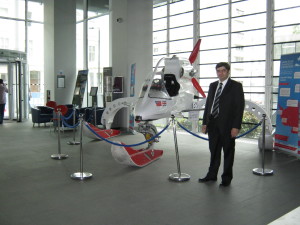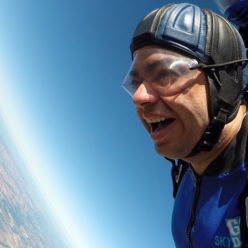I would like to share with you a true story of my job interview at the Imperial College London. Yes, the world renowned Imperial College London. This was the year 2010. I applied for a position of researcher at the Imperial College London.
By sharing this, I hope to inspire the engineers particularly from Gujarat and India who at times, like me, have felt inferior, while even thinking to compete with other engineers from IITs, MITs, Cambridges, Oxfords, Standfords, Imperial Colleges, of the world. By reading this article you have read and understood the Disclaimer.

I went to the Imperial College London to give the interview and carried with me the Voice Activated Power Sockets Home Automation system (described in detail here http://www.technikal.net/blog/voice-activated-power-sockets-2/ ) that I had designed and developed at home, thinking I might get an opportunity to demonstrate what I do and could do.
First I was asked to present my previous research work to the panel of academics and professors. The presentation and personal interview went ok. At the end of the interview, while the interview panel was wrapping up, I approached the chief interviewer, the professor, and asked him if he had a few minutes as I wanted to demonstrate to him something that I had developed. The professor agreed to give me a few minutes. So very quickly I dug into my rucksack and brought out my voice activated home automation system. I then powered up everything and issued a speech command “Lights ON” and the connected bulb lit up. Then I commanded the system “Lights Off” and the bulb switched off.
After seeing this, the professor became very interested in my work and my abilities to make things. I informed him that I have been playing with electronic circuits since I was a child. I have been very fond of making electronic circuits and “making things happen”. The professor replied, “I understand, since you like to make things, I would like to offer you a challenge and if you accept the challenge then we will leave this interview aside and the outcome of your interview will be decided based on how you perform in the challenge”.
I was confident in myself and my knowledge and skills so I accepted the challenge without knowing what it was going to be. The professor then disclosed the challenge to me and said, it would be to design an electronic system that would measure and log velocities of two wheels mounted on an axle at each of its ends without physically touching the wheels (i.e. non-contact). I was given 3 weeks by the professor to make such a system and demonstrate it to him. The professor offered me to pay all the expenses.
I went home and thought about the challenge. Before starting to work on the challenge I emailed the professor with the specification of the challenge to confirm with him whether I understood the challenge correctly.
This is what I wrote:
“Just to clarify if I have understood your challenge clearly, so please let me put it into words.
There are two wheels which are mounted on an axle and they move in straight line without steering ability. I should make a non-contact electronic sensing device which would measure each wheel’s velocity separately. This will enable the calculation of velocity difference when the wheel axle assembly moves around a corner where one wheel moves slowly compared to the other.
Typically, cars are front wheel steered and rear wheels are fixed and move in straight line. Around corners, car’s rear wheels move with different velocity to each other.“
In his reply the professor agreed and also informed me that I should make the system such that it can make the real-time contact-less sensing with a good way of logging or real-time wireless transfer of the data.
I then started working on the challenge. The important thing in the challenge was to find out a non-contact way to measure the velocity of the wheel. The thought immediately came to my mind was that I needed an encoder however the professor wanted to test my knowledge of Electronics and I wanted to demonstrate my skills so I decided to design and develop my own encoder with a separate optical or magnetic sensor. At the same time, I quickly offered the first solution using bicycle computers.
Then I bought a test platform, a remote controlled monster truck to test my system on it. I designed and developed two optical sensors (one for each wheel) that worked on pulse generation and counting, from scratch. I interfaced the sensors with a micro-controller board. I developed the firmware that logged the velocity data of two wheels into its EEPROM data memory. I also developed a PC based driver that communicated with the micro-controller board over a USB interface and downloaded the logged data on a press of a single button. All of these things I completed it in my free time at night and on a weekend at home in just few days.
I went back to the Imperial College London to demonstrate the system. After reaching there, I took my laptop and the remote control monster truck. I powered the system and drove the monster truck on the floor of the professor’s office. The professor measured the distance roughly and timed the movement of the truck with his watch. The professor also stopped the truck with his foot to generate varying velocity data. Then I downloaded all the stored velocity data into my laptop and gave the data to the professor in a memory stick. The professor plotted a graph out of the data and the graph clearly showed the velocity and the variation in the velocity correctly as he had roughly estimated it to be.
The professor was very impressed with everything and offered me the position. Unfortunately due to few critical reasons I could not accept the position.

